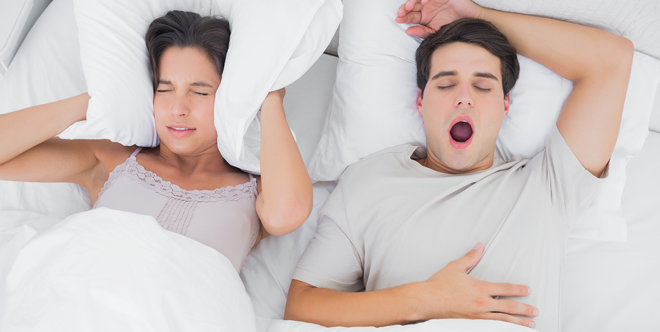Some people go to a psychic to learn about their future. Others turn to science. In this case, we’ll turn to science. As a sleep apnea sufferer, snoring is often the biggest indicator of sleep apnea and sleep disordered breathing, but it turns out that snoring may be more of a crystal ball than originally thought. According to new research, snoring in your early twenties is one of the biggest indicators that you will start showing more progressive and deleterious symptoms of sleep apnea in your forties, and beyond.
The study, which was carried out by Swati Gulati and Aiman Tulaimat at the John H. Stroger Hospital of Cook County in Chicago, aimed to find out if the duration of common symptoms of obstructive sleep apnea could be a better predictor of the disorder. Specifically, they were looking at obesity and snoring. They also wanted to know if people suffering from sleep apnea had evidence of these conditions earlier in life and if those conditions could be used as forecasters for a future diagnosis. Essentially, the researchers were trying to create an evolutionary timeline for sleep apnea.
Patients in the study were recruited from a sleep lab and were given a series of questionnaires. One questionnaire asked questions regarding the onset and progression of symptoms, like apneatic events, snoring, fatigue, breathlessness, excessive daytime fatigue, leg edema, morning headaches and depression. The next questionnaire aimed to create a more accurate chronological order of these symptoms and onset by asking the participants questions regarding major national events. The scientists could then take those events and create a more precise timeline for each participant and weed out anachronisms.
The results of the study are surprising: the average age for onset of snoring in the test group was 28 and the average for diagnosis of sleep apnea is 52 years. That’s more than a twenty-year gap. Within that time, not only did Guns N’ Roses break up and Clinton and Monica played around with a cigar, but the sleep apnea got worse and worse. According to the research, the snoring started in the lately twenties – then poor concentration and headaches started becoming problematic in the patients’ mid-thirties. In the partakers’ forties, the symptoms went down that alley your mother always warned about: they started suffering from cardiopulmonary symptoms.
After the cohorts’ forties, Dr. Swati Gulati says that there was a “rapid progression of disease” until diagnosis and treatment. Moreover, they found out that the severity of snoring had something to do with the severity of obstructive sleep apnea. What does all this mean? Basically, the longer you wait to get tested for sleep apnea, the worse your condition will be. What’s more, it will keep getting worse until you get tested and start undergoing CPAP. Dr. Gulati goes on to say, “Timely screening and diagnosis of obstructive sleep apnea will lead to early initiation of treatment and will slow its progression.”
In the end, there are many options for getting tested for the disorder. For instance, Easy Breathe offers the Home Sleep Test for individuals who have a regular physician and the Easy Sleep Apnea Test for those people who don’t. Both will allow you to test yourself for the disorder in the comfort of your own home. These tests are easy to take and you will get your results in only a few days. If you are in your twenties and you or your bed partner is noticing that you are excessively snoring, it is definitely imperative that you get tested right away. In the end, you could be reversing decades of damage to your health.











